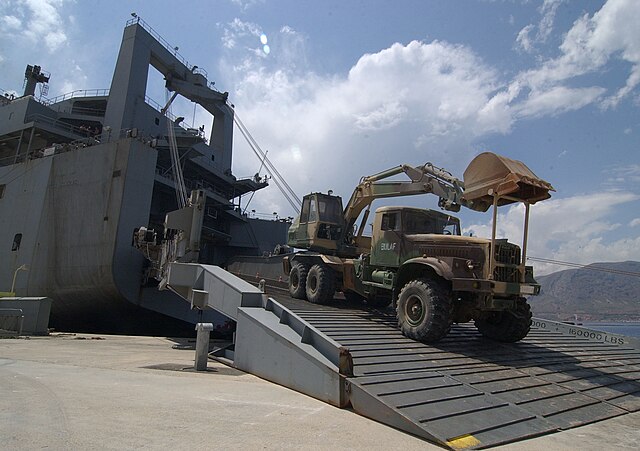An inclined plane, also known as a ramp, is a flat supporting surface tilted at an angle from the vertical direction, with one end higher than the other, used as an aid for raising or lowering a load. The inclined plane is one of the six classical simple machines defined by Renaissance scientists. Inclined planes are used to move heavy loads over vertical obstacles. Examples vary from a ramp used to load goods into a truck, to a person walking up a pedestrian ramp, to an automobile or railroad train climbing a grade.
Wheelchair ramp, Hotel Montescot, Chartres, France
Demonstration inclined plane used in education, Museo Galileo, Florence.
Using ramps to load a car on a truck
Loading a truck on a ship using a ramp
A simple machine is a mechanical device that changes the direction or magnitude of a force. In general, they can be defined as the simplest mechanisms that use mechanical advantage to multiply force. Usually the term refers to the six classical simple machines that were defined by Renaissance scientists:Lever
Wheel and axle
Pulley
Inclined plane
Wedge
Screw
The screw's self-locking property is the reason for its wide use in threaded fasteners like bolts and wood screws
Illustration of a four-bar linkage from Kinematics of Machinery, 1876






